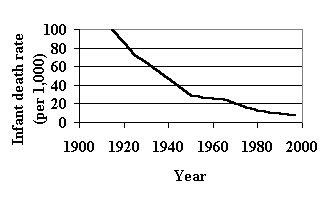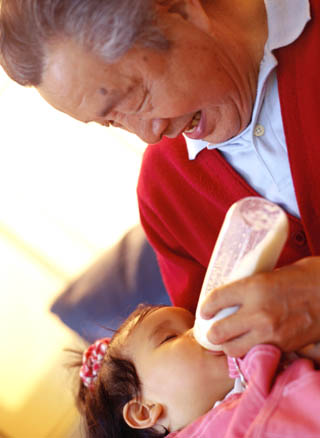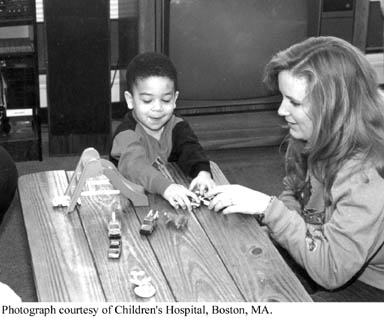
Doing Our Best for Children: A Guide for Evaluating Hazard Claims and Setting Priorities - Printable version
Good news!
As the scientists, writers, artists, leaders, voters, taxpayers, teachers, and parents of the future, children represent one of our nation’s most valuable resources. Fortunately, the approximately 81 million people under the age of 21 in America face a world of incredible opportunity and promise, and we need to make sure that they know it. Our scientific understanding and technological capabilities allow us to:
- Produce and distribute vast quantities of healthy and nutritious food,
- Feed infants sterile formula and feed children pasteurized, refrigerated milk,
- Provide homes with clean water and sufficient electricity and heat,
- Maintain good personal hygiene,
- Prevent the occurrence of once-debilitating diseases,
- Move ourselves and information rapidly around the globe, and
- Detect and treat medical conditions that reduce the length and quality of life.
Life Expectancy at Birth (in Years) and Infant Death Rate (per 1,000
population).
Data from the U.S. Census Bureau, Statistical Abstract of the United
States: 1999
Does the good news surprise you?
Given the way that risk is covered by the media, it may be hard to put our relatively high quality of life in perspective. We live in an age when information is generated at an unprecedented rate and moves at an overwhelming speed. It is a challenge for the media and for consumers to keep up. Dr. Kimberly M. Thompson wrote Health Insight: A Consumer’s Guide to Taking Charge of Health Information Information with the goal of helping people manage health risks in their lives. She wrote this guide, Doing Our Best for Children: A Guide for Evaluating Hazard Claims and Setting Priorities, to help parents evaluate warnings about possible risks to their children.
Each of us grapples with managing the risks in our own lives, and parents
face the added challenge and responsibility of managing risks for their
children. This guide suggests ten points that parents, kids, and policy
makers should keep in mind as they use the information reported in the
media to evaluate children’s risks, put risks them in perspective, and
make good choices.
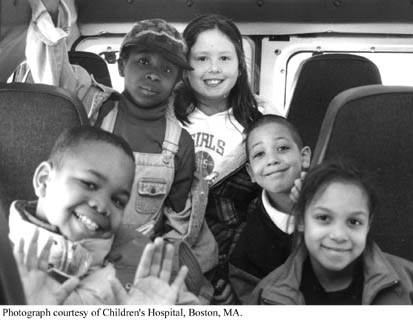
10 Points to Keep in Mind
1. Life is good, but it will never be risk-free.
The amazing accomplishments of the past 100 years may lead us to expect a risk-free life. If we compare a day in the life of a typical child 100 years ago to a day in the life of a typical child today, we see striking differences.
Today's typical American child
- can expect to live approximately 30 years longer on average
- is six times more likely to finish four years of high school
- will never know the devastation of polio or spend time in an iron lung
- won’t get tuberculosis from milk, rickets from vitamin D deficiency, scurvy from vitamin C deficiency, or cretinism from lack of iodine in the diet
- won't encounter legal abusive child labor practices
- can go to school without concern about small pox and with immunization protection from many diseases like diphtheria, pertussis, measles, mumps, rubella, haemophilus influenze B, hepatitis B, and chicken pox
- will be screened for conditions like phenylketonuria, congenital hypothyroidism, and lead poisoning
- will be given antibiotics to treat an infectious disease

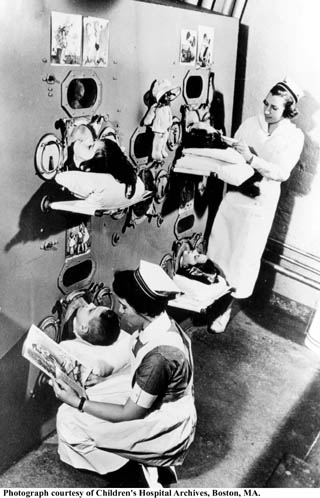
Herd of tuberculosis-free cattle used by Boston Children's Hospital (circa 1914) Four polio victims in a room-size respirator (circa 1940)
This illustration is heartening, but there is no such thing as zero risk. We all risk the possibility of choking or food poisoning every time we eat. We gain the benefits of medical cures by tolerating side effects. We acquire protection from infectious diseases by accepting the relatively small risks of vaccination. Just like our predecessors, we face numerous risks every day. Unlike our predecessors, however, we benefit from knowledge and an increasing array of products that make our chances of surviving to the next day very high - but not 100%.
Back to 10 points
2. Risks for children and adults
differ.
The risks that remain may have significantly different impacts for children
than for adults for many behavioral, biological, chemical, physical, and
other reasons. Comparing the top ten causes of death for several age groups
of Americans provides some evidence of differences in mortality risks.
This comparison suggests that strategies to reduce risks for adults may
not adequately address the important risk factors for children, and vice
versa.
Data from the National Vital Statistics Reports, Volume 47(19)
| Cause | (ages 15-24) |
(25+) |
||
| Certain conditions originating in the perinatal period | ||||
| Birth defects (Congenital anomalies) | ||||
| Symptoms, signs, ill-defined conditions | ||||
| Unintentional injuries | ||||
| Heart disease | ||||
| Pneumonia and influenza | ||||
| Homicide | ||||
| Stroke (Cerebrovascular) | ||||
| Certain infectious and parasitic diseases | ||||
| Certain intestinal infections | ||||
| Cancer (Malignant neoplasms) | ||||
| HIV | ||||
| Chronic obstructive pulmonary disease (Bronchitis/Emphysema/Asthma) | ||||
| Suicide | ||||
| Diabetes | ||||
| Nephritis (Kidney disease) | ||||
| Septicemia (Blood infection) | ||||
| Alzheimers disease | ||||
Unfortunately, children do not come with instructions. Parents must actively seek information about how best to best protect and nurture their kids as they grow, and must appreciate that having been a child does not necessarily provide adequate training for raising one. All parents quickly learn that newborn babies can easily choke, suffocate, drown, or fall, and that, as toddlers, children may put anything into their mouths. Parental attention can make the difference between a child’s safe exploration of his or her environment and a trip to the emergency room.
Back to 10 points
3. The amount of exposure to the hazard and how exposure occurs matter.
In every assessment of risks, it is important to know the extent of exposure to the hazard as well as the potential impact of that exposure. Exposure to some hazards, like air pollutants, may be difficult for individuals to assess because the amounts cannot be easily observed. However, advances in science and technology allow us to measure tiny amounts of some substances, often at levels well below those that cause concern. For most substances, when the exposure is very low, the chances of an impact are also very low.
Too much of a good thing can be worse than a little bit of something bad. For example, taking too many pain killers can kill you, but having an occasional drink might actually be good for you. Similarly, too much television viewing is correlated with obesity, but a little television might be educational or entertaining.
The manner of exposure also makes a difference in the magnitude of risk. A child can be harmed from a single cigarette if he or she eats it, but smoking a single cigarette in a lifetime is unlikely to cause significant harm. Things add up, however, and smoking a lot of cigarettes can lead to heart disease, cancer, stroke, lung disease, and birth defects.
A common misperception appears to have emerged that children are always more susceptible to health effects than adults; in other words, that a similar exposure will always have greater impact on a child than on an adult. In fact, children can be more or less susceptible to effects than adults depending on the substance. For example, children are much less susceptible than adults to liver toxicity from acetaminophen, but much more susceptible to neurological effects from lead.
A related misperception is that children always have a higher exposure
relative to adults. In fact, their exposure can be higher or lower depending
on the hazard. For example, children probably do get more exposure to
allergens in carpets and metals in soil, but they get less exposure to
substances found in occupational settings.
Back to 10 points
4. Testing substances in animals
gives useful, but imperfect, information about the effects of substances
in humans.
Animal testing can provides information about the types of health effects (good and bad) that humans might expect if similarly exposed to a substance. But because animal testing costs a great deal in human and animal resources, toxicity tests typically use small numbers of animals that are given large amounts of the substance to ensure that an effect will be seen. This means that we may may have to guess about the impact of lower amounts of exposure.
Using toxicity tests, we can find adverse health effects for almost any
substance, including water and the essential elements. Consumers need
to realize that a demonstrated adverse effect of a tested substance does
not necessarily mean that effects will occur for humans in the amounts
a human typically consumes or is otherwise exposed to. More important,
untested substances are not non-toxic. Instead, they are substances for
which we are uncertain about effects or the amounts that might cause effects.
Back to 10 points
Back to 10 points
6. Some really important risks
for children do not make enough news.
- Unintentional injuries, including motor vehicle accidents, continue to be the leading cause of death for children, but not all parents insist on safety belts, car seats, and bicycle helmets.
- Current statistics show that guns kill 10 to 12 children (aged 0-19) in the United States every day on average. Two or three of these children take their own lives, and the other deaths are homicides or unintentional injuries. Other developed nations do not come near these statistics.
- Children continue to be abused and neglected (approximately 1 of every 100 children severly enough to be confirmed according to current statistics).
- Poverty continues to limit the choices of the families that are responsible for raising 20% of American children under age 18.
- High-risk sexual behaviors lead to thousands of cases of sexually transmitted diseases and unwanted pregnancies every year.
- Proper food handling and preparation could significantly reduce the incidence of food poisoning. Parents can do simple things like carefully check expiration dates, keep kitchens clean and bug-free, wash produce well, fully cook meat and poultry, and keep prepared foods away from raw meat, chicken, and eggs.
- Tobacco use continues to contribute significantly to disease. Although
our laws prohibit children under age 18 from purchasing cigarettes,
nearly 25% of children report smoking a whole cigarette by age 13, and
approximately 85% of the Americans who become smokers start before the
age of 18. National survey results show that among youth 12-17, smoking
is highly correlated with other high-risk behaviors like illicit drug
use and heavy drinking.
Back to 10 points
7. Some speculative, minor risks
for children make too much news.
We depend on a wide range of products and technologies, and consequently, we are intrigued by stories that seem to present striking new evidence of risks associated with a currently trusted product or technology. For example:
- Electromagnetic fields made the news when researchers suggested that they might cause cancer. Subsequent research failed to support the hypothesis, but people still worry about power lines. In contrast, risks from electrocution and the environmental consequences of our ever-growing population's energy demands don’t make the headlines.
- The controversy about silicone breast implants provides an example of how a product can lose consumer confidence before the science has a chance to weigh in.
- Recently parents may have heard that because of risks from pesticides they should limit the amounts of fresh produce their children consume. Like any other substance, pesticides in high amounts can have harmful effects. Pesticide poisoning from their improper use should always be of concern and, like all potentially hazardous substances, pesticides should be kept out of children’s reach. However, we have no scientific basis for believing that the small amounts of pesticide residues typically found on food are either harmful or safe. Certainly, if we did have such had evidence of harm the decision to eliminate pesticides would be an easy one. Most consumers also don’t realize that there is no scientific evidence to suggest that produce grown with organic farming methods is safer or more nutritious than the same produce grown conventionally. Researchers are looking into these questions, but in the mean time, consumers must remember that eating a diverse diet with a lot of fresh fruits and vegetables improves health, and that children should be encouraged to eat a lot of fruits and vegetables every day.
Back to 10 points
8. It is never too soon to start
teaching children about risks.
As the world gets smaller with globalization, and bigger with its booming
population, today’s children will struggle with finding a role. We must
teach children how to deal with strangers and to be cautious but not afraid.
Children need hope for the future and they need to be empowered with knowledge
and confidence. Our connections with our children have an enormous impact
on how they see themselves, the world, and their opportunities in life.
Back to 10 points
9. The media itself can pose
risks.
We all consume media products, particularly children between the ages of 2 and 18. We know that consuming high amounts of media correlates with physical inactivity, but we know relatively little about the other impacts of high amounts of media consumption. If children tend to experience violence in the media, does it lead them to be more violent or more tolerant of violence? Given that the children who make the news often do so in the context of tragedy, do children get the message that they deserve media attention only if they do are involved in something horrible? Does access to the Internet pose unforeseen hazards?
Average daily time (hours:minutes) a child aged 2-18 is exposed to
each medium.
From the 1999 Kaiser Foundation report Kids & Media
| Medium | Time |
| Television | 2:46 |
| Taped TV shows | 0:11 |
| Videotapes (commercial) | 0:28 |
| Movies | 0:13 |
| Video games | 0:20 |
| Print media | 0:44 |
| Radio | 0:39 |
| CDs and tapes | 0:48 |
| Computer | 0:21 |
| Total | 6:32 |
Amidst these questions about the impact of the media, some important
observations can be made. Reducing stories to sound bites is critical
to catch people’s attention, but consumers must recognize that there is
often much more to the story. Also, the attention span of the media is
significantly shorter than a lifetime, and setting national or personal
priorities based on the news of the day can result in an unjustified fear
of unlikely hazards and lack of reasonable concern about known risks.
The media has a unique and enormous opportunity to inject context into
stories to remind people about how a risk fits in the scheme of things
and to help shape rational priorities.
Back to 10 points
Throughout the past decade, the national focus on children’s well-being grew dramatically, but coordination of consumer, regulatory, and industry efforts is still needed to guide decisions about spending and research priorities.
A number of issues make coordination challenging. For example, definitions make a huge difference in politics, as if not calling cigarettes and guns consumer products justifies widely differing allowable levels of risk. Similarly, lack of standard age-group definitions for what to call young Americans makes characterizing children's risks difficult and makes comparisons impossible. In addition, strategies for improving children’s lives are currently evaluated using a wide spectrum of outcomes, and efforts are needed to integrate multiple outcomes into a comprehensive metric.
Some important recent efforts have shown that a number of children experience multiple risk factors that make them much more vulnerable to bad outcomes. We have a responsibility to make sure that these children don’t fall through the cracks.
Percent of high school dropouts and teen parents among children with a specific total number of risk factors (numbers in parentheses below the risk factors indicate the percent of the total 71,600,000 children with that many risk factors). Risk factors include: (1) child is not living with two parents, (2) household head is a high school dropout, (3) family income is below the poverty line, (4) child is living with parent(s) who do not have steady full-time employment, (5) family is receiving welfare benefits, and (6) child does not have health insurance. From the 1999 Annie E. Casey Foundation Kids Count Data Book.
As a nation, our ability to do our best for our children is limited by
our lack of a coherent, rational strategy for evaluating risks and prioritizing
where we to spend our limited resources. Efforts should be initiated to
promote cooperation between regulators, industry, consumers, parents,
teachers, and children.
Back to 10 points
Here is a list of things that parents can do to reduce children’s risks.
- Always wear your safety belt, buckle kids in the back seat, and properly use a child safety seat in the back for infants and small children
- Be active, report unsafe products, complain about unsafe situations, and work for change
- Cover electrical outlets and teach children not to stick any objects into outlets
- Discourage violent behavior, teach children to use their words to resolve conflict
- Dispose of any unlabeled or unused products (including medicines, cleaning products, and potentially hazardous substances)
- Do not allow anyone in your house to smoke
- Do not allow children to play with plastic bags
- Do not allow clothing or objects with strings to be around children’s necks
- Do not allow guns in your home or allow your children to play in homes where guns are stored (ask the homeowners if you are not sure) - if you must keep guns and bullets in your home, keep them locked in separate out-of-reach locations
- Do not assume that a playground is safe just because kids play there, instead evaluate it for hazards
- Eliminate potential child lead hazards in the home like peeling paint, lead dust, and old painted objects
- Engage children in conversations; teach them to be friendly and respectful to others
- Establish expectations with and for children about performance in school
- Feed children a diet with a lot of fresh fruit, vegetables, and calcium
- Get your child vaccinated and take your child for routine check-ups
- Immediately dispose of deflated or popped balloons
- Insist on safety behaviors, including wearing helmets and protective equipment
- Insist on thoroughly cooked meat, eggs, and poultry and on fresh, properly handled, age-appropriate foods
- Insist that your child’s hands are washed frequently (including front, back, and between the fingers) - always before meals and after using the toilet
- Install smoke or fire detectors and make sure that they always contain working batteries
- Keep a fire extinguisher in your home
- Keep children away from hot surfaces and liquids
- Keep objects with small parts away from children who might mouth them
- Keep sick children home and expect others to do the same
- Keep the poison control phone number by every phone and, if you suspect poisoning, call immediately
- Keep your home and areas where children spend time clean
- Learn about child development and constantly evaluate how new developmental milestones change children's risks and vulnerabilities
- Learn cardiopulmonary resuscitation (CPR), including techniques for young children
- Learn the plants in the home and yard that are poisonous and teach children not to eat such plants
- Limit the amount of time children watch television, play electronic games, and spend on the Internet, and tune in to their media expereinces to make sure that they use media safely
- Make sure that all children’s items, including cribs, seats, and toys meet current safety standards
- Make sure that your child learns good dental hygiene and benefits from fluoride
- Never leave a child unattended near standing water, including water in pools, buckets, and toilets
- Pay attention and respond to product recalls
- Pay attention to where children are and how they interact with others and their environment
- Place all potentially hazardous substances in locked, out-of-reach places
- Play an active role in your community and at your child’s school
- Promote exercise and an active lifestyle
- Put healthy infants to sleep on their backs or sides
- Read product manuals and keep them in a convenient place for referral
- Read warning labels to children and teach them not to use electrical appliances near water
- Reduce the temperature of the water heater in your home to 120 degrees F
- Respect animals and pets; teach children how to properly interact with pets, to avoid screaming, aggressive acts, and staring into the eyes of a dog; not to approach, pet, or touch an unfamiliar animal, and to stay calm and quiet with their arms by their sides or to curl up into a ball and cover their ears if attacked
- Safety-proof your home to prevent falls and injury hazards (tour your house as your child sees it, perhaps on your knees)
- Store products (including potentially hazardous substances and medications) in their original containers
- Take good care of pets; keep them clean, healthy, and parasite-free (take any animal to the vet BEFORE taking it home and for routine check-ups)
- Talk to children about the risks associated with illicit drugs, alcohol, and sexually transmitted diseases, and help children develop strategies to avoid them
- Teach children to respect water hazards and to always swim with a buddy
- Teach children about road hazards, like always cross with an adult, never play in the street or behind parked cars, and look both ways before crossing (if they are old enough to cross on their own)
- Teach children about the proper uses of tools and appliances
- Teach children to stay low and get out of the building in case of fire (practice a home fire drill)
- Teach children that if their clothing catches fire they must stop, drop, and roll
- Tell children the places that are off-limits to them and enforce these limits
- Turn motor vehicle engines off when parked and teach children about carbon monoxide hazards
- Use sunscreen and sunglasses on children
- Wash your own hands after changing diapers or touching raw meats and poultry
- Watch your child for signs of depression, illness, and eating disorders and get your child help if any warning signs appear
- When in doubt, consult your doctor, and don’t be embarrassed to ask questions

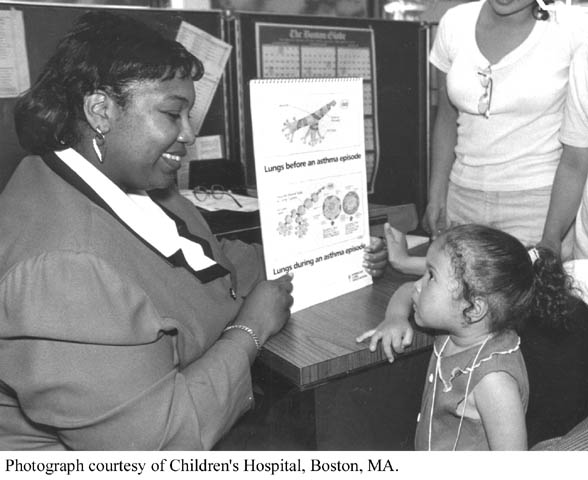
© 2000, 2004 Kimberly M. Thompson. Dr. Thompson wrote this guide with funding from the National Consumers League (NCL) and she released it at the NCL's symposium on January 12, 2000 held at the National Press Club in Washington, DC on "Analyzing the Threats to Children from Consumer Products: A Symposium on Risk Assessment and Risk Communication." The Harvard Center for Risk Analysis published this guide in April 2000.

